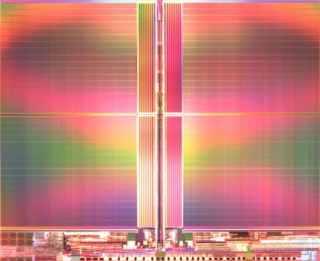Intel uses TLC to make densest Nand flash device

Intel has created what it says is the industry's highest-capacity, smallest Nand flash memory device yet.
The 64-gigabit — or 8-gigabyte (8GB) — device, announced on Tuesday, was produced using 25nm lithography and Intel and Micron Technology's 3-bit-per-cell (bpc) Nand flash technology, the development of which was unveiled by the companies a year ago.

Intel and Micron's new technology will clear the way for higher-capacity flash products. Photo credit: Intel
According to Intel and Micron, the device will make it possible to cram more storage capacity into USB memory sticks and secure digital (SD) cards.
3bpc, also known as triple-level cell (TLC) technology, stores three bits of information per cell, whereas flash memory traditionally involves one (single-level) or two bits (multi-level) per cell. Intel says the use of TLC allowed the device announced on Tuesday to be 20 percent smaller than Intel and Micron's 25nm multi-level cell 8GB device.
"As the role of Nand memory continues to escalate in consumer electronics products, we see the early transition to TLC on 25nm as a competitive edge in our growing portfolio of Nand memory products," Micron's Nand chief Brian Shirley said in a statement. "We are already working to qualify the 8GB TLC Nand flash device within end-product designs, including higher-capacity products from Lexar Media and Micron."
Intel and Micron have a joint venture for their Nand work, called IM Flash Technologies (IMFT). One of IMFT's chief competitors is Samsung, which in April unveiled Flash memory chips that were manufactured using even smaller-scale 20nm lithography — however, those chips were based on multi-level cell technology, making them less information-dense.